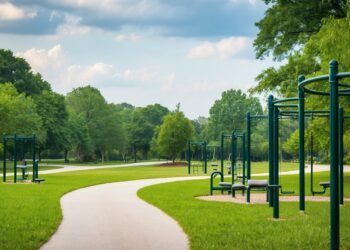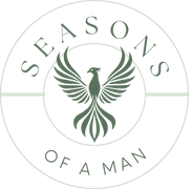Staying active as we age is crucial for our health and happiness. But as we hit our 50s, many of us notice that recovery takes longer than it used to. Our bodies need more time to bounce back after tough workouts, but that doesn’t mean we have to slow down completely.
Getting enough rest—at least 7-8 hours of sleep each night—is essential for muscle recovery and growth after 50. This recovery time lets our bodies repair and build stronger muscles, just like they did when we were younger. Without proper rest, we risk injury and slower progress.
The good news is that we can still train hard after 50 with the right recovery approach. Spreading out moderate cardio activity over at least three days each week helps keep our hearts healthy without overwhelming our bodies. Adding protein-rich foods after strength workouts supports muscle repair, while techniques like the “repeat bout effect” can help our muscles adapt and recover faster with consistent training.
Understanding the Aging Body
As men pass 50, our bodies undergo significant changes that affect how we exercise and recover. These changes impact everything from muscle growth to energy levels and require adjustments to both workouts and recovery strategies.
Impact of Aging on Muscle Recovery
Recovery takes longer as we age because our bodies simply don’t bounce back like they used to. After 50, muscle protein synthesis slows down, meaning our bodies rebuild damaged muscle tissue more slowly after workouts.
Inflammation and muscle soreness often last longer too. What might have taken a day to recover from in our 30s might now require 2-3 days of rest.
Blood flow to muscles decreases with age, which slows the delivery of nutrients needed for repair. This is why some men over 50 notice they’re sore for longer periods after training.
Key recovery changes after 50:
- Slower muscle repair processes
- Increased recovery time between workouts
- Greater potential for overtraining injuries
- More inflammation after exercise
Role of Testosterone in Muscle Growth
Testosterone levels naturally decline by about 1-2% per year after age 40. This hormone plays a crucial role in building and maintaining muscle mass, which is why many men find it harder to gain strength as they age.
Lower testosterone affects more than just muscles. It can impact energy levels, motivation to exercise, and even how quickly we bounce back after workouts.
Some signs of declining testosterone include:
- Increased difficulty building new muscle
- Longer recovery periods
- More stubborn body fat, especially around the middle
- Decreased exercise performance
While we can’t stop this natural decline, we can slow it down with proper nutrition, adequate sleep, and smart training that doesn’t overtax our systems.
Adjusting Fitness Goals with Age
We don’t need to abandon our fitness ambitions after 50, but we should adjust our expectations and approach. Quality now matters more than quantity in our workouts.
Instead of trying to lift maximum weights or exercise daily, focus on consistency and proper form. Many successful athletes over 50 train fewer days per week but maintain their results through smarter, more focused sessions.
Recovery becomes a crucial part of the training process itself. What you do between workouts often determines your progress more than what you do during them.
Try these adjusted goals:
- Maintain muscle mass rather than focusing solely on gains
- Prioritize mobility and flexibility alongside strength
- Allow for more recovery days between intense sessions
- Focus on injury prevention through proper warm-ups
Essential Recovery Strategies
Recovery isn’t just about resting—it’s about strategic actions that help your body rebuild and prepare for your next workout. As men over 50, our bodies need more intentional recovery practices to maintain strength and prevent injury.
The Importance of Sleep for Recovery
Sleep is when the real magic happens for muscle repair. For men over 50, aim for 7-8 hours of quality sleep each night. During deep sleep, your body releases growth hormone that helps rebuild muscle tissue and reduce inflammation.
Creating a consistent sleep schedule helps optimize recovery. Try to go to bed and wake up at the same time each day, even on weekends.
Your sleep environment matters too. Keep your bedroom cool (65-68°F), dark, and quiet. Consider blackout curtains and white noise machines if needed.
Sleep-tracking devices can help you understand your sleep patterns better. Many men over 50 discover they aren’t getting enough deep sleep even when they’re in bed for adequate hours.
Proper Hydration and Rehydration Techniques
Water plays a crucial role in muscle recovery and performance. As we age, our sense of thirst diminishes, making intentional hydration even more important.
Daily hydration targets:
- At least 3-4 liters of water daily
- More on workout days (add 16-20 oz for every hour of exercise)
Don’t wait until you’re thirsty to drink. By then, you’re already dehydrated. Keep a water bottle with you throughout the day.
For better absorption, add electrolytes to your water, especially after sweaty workouts. Sodium, potassium, and magnesium help your muscles recover more efficiently.
Morning hydration jump-starts recovery. Drink 16-20 ounces of water right after waking to rehydrate after overnight water loss.
Nutrition for Rebuilding Muscle and Energy
Protein becomes increasingly important for muscle maintenance after 50. Our bodies become less efficient at processing protein, so timing and quality matter.
Key recovery nutrients:
- Protein: 30-40g within 30 minutes post-workout
- Healthy fats: Avocados, nuts, olive oil to reduce inflammation
- Complex carbs: Sweet potatoes, oats, quinoa to replenish energy stores
Blood sugar management supports recovery by preventing energy crashes. Pair proteins with carbs to maintain stable blood sugar levels throughout the day.
Anti-inflammatory foods like berries, fatty fish, and leafy greens help reduce workout-related inflammation. Consider adding turmeric or tart cherry juice to your recovery nutrition plan.
Meal timing can optimize recovery. Eating small meals every 3-4 hours keeps nutrients flowing to repairing muscles throughout the day.
Optimizing Workout Routines
As we age, strategically designing our exercise regimen becomes essential for maximizing results while minimizing recovery time. The right workout structure can help prevent injuries and keep us performing at our best.
Effective Warm-Up and Cool-Down Practices
A proper warm-up isn’t optional after 50—it’s essential. We recommend starting with 5-10 minutes of light cardio to increase blood flow to muscles. Think brisk walking, light cycling, or gentle rowing.
Dynamic stretching should follow your cardio warm-up. Include movements like arm circles, hip rotations, and walking lunges to prepare your joints for the work ahead.
Cool-downs are equally important. Spend 5-10 minutes gradually reducing intensity, then incorporate static stretching. Hold each stretch for 20-30 seconds without bouncing.
Foam rolling can be your best friend for releasing tight muscles. Focus on problem areas like IT bands, calves, and upper back to improve recovery and maintain flexibility.
Incorporating HIIT and Resistance Training
High-intensity interval training (HIIT) offers tremendous benefits for men over 50. These short, intense workouts boost metabolism and cardiovascular health while taking less time than traditional cardio.
Try this simple HIIT format:
- 30 seconds of intense effort (like sprints or squat jumps)
- 90 seconds of active recovery (walking or light movement)
- Repeat 6-8 times
- Perform 2-3 times weekly
For resistance training, focus on compound movements that work multiple muscle groups. Squats, modified push-ups, and rows give you more bang for your buck.
Start with lighter weights and higher reps (12-15), gradually increasing weight as you build strength. Two to three resistance sessions weekly provides adequate stimulus without hampering recovery.
Balanced Approach to Endurance and Strength
We need both endurance and strength as we age, but finding the right balance is key. Aim to include 2-3 days of moderate-intensity cardio like cycling, swimming, or brisk walking.
These endurance activities improve heart health and recovery capacity without overtaxing joints. Keep sessions between 20-40 minutes at a pace where conversation remains possible.
Alternate between resistance training days and endurance days to give your body adequate recovery time. For example:
- Monday: Resistance training
- Tuesday: Light cardio/recovery
- Wednesday: HIIT
- Thursday: Rest
- Friday: Resistance training
- Weekend: One endurance day, one complete rest day
This balanced approach helps build your body systematically while ensuring proper recovery between sessions. Remember that consistency trumps intensity—regular, moderate workouts yield better long-term results than occasional all-out efforts.
Post-Workout Recovery Techniques
Effective recovery after exercise is crucial for men over 50. The right techniques can help your body heal faster and prepare for your next workout while preventing injury.
Active Recovery and its Benefits
Active recovery means doing light exercise on your rest days instead of being completely inactive. This gentle movement increases blood flow to sore muscles, which delivers nutrients and removes waste products.
Try activities like walking, swimming, or cycling at a very easy pace. Even 15-20 minutes can make a difference in how you feel the next day.
We’ve found that active recovery helps maintain joint health as we age. It keeps our bodies moving without the strain of intense workouts.
Many men report better energy levels throughout the day when they incorporate active recovery rather than complete rest. This approach can be especially helpful if you’re dealing with decreased testosterone or energy.
Reducing DOMS and Increasing Flexibility
Delayed onset muscle soreness (DOMS) can be more intense and last longer as we age. Stretching after workouts and on rest days can significantly reduce this discomfort.
A foam roller is your best friend! Rolling sore muscles for 5-10 minutes helps break up tension and increases blood flow. Focus on large muscle groups like quads, hamstrings, and back.
Try these flexibility boosters:
- Gentle yoga sessions (10-15 minutes)
- Daily stretching routines (hold each stretch 30 seconds)
- Warm baths with Epsom salts
Staying hydrated is crucial too. Dehydration makes DOMS worse and slows recovery. Aim for at least 8 glasses of water daily, more on workout days.
The Role of Mental Health in Physical Recovery
Our mental state greatly affects how our bodies recover. Stress increases cortisol, which can slow healing and muscle growth.
Try these mental recovery techniques:
- Deep breathing exercises (5 minutes daily)
- Meditation or mindfulness practice
- Quality sleep (7-8 hours is ideal)
Building confidence through consistent recovery routines helps maintain motivation. We often see men give up exercise because they’re constantly sore or tired.
Remember that recovery isn’t just physical! As estrogen and testosterone levels change with age, our bodies need different kinds of support. Listen to your body and adjust your recovery as needed.
Mental recovery also means celebrating small wins and progress rather than comparing yourself to your younger days.










